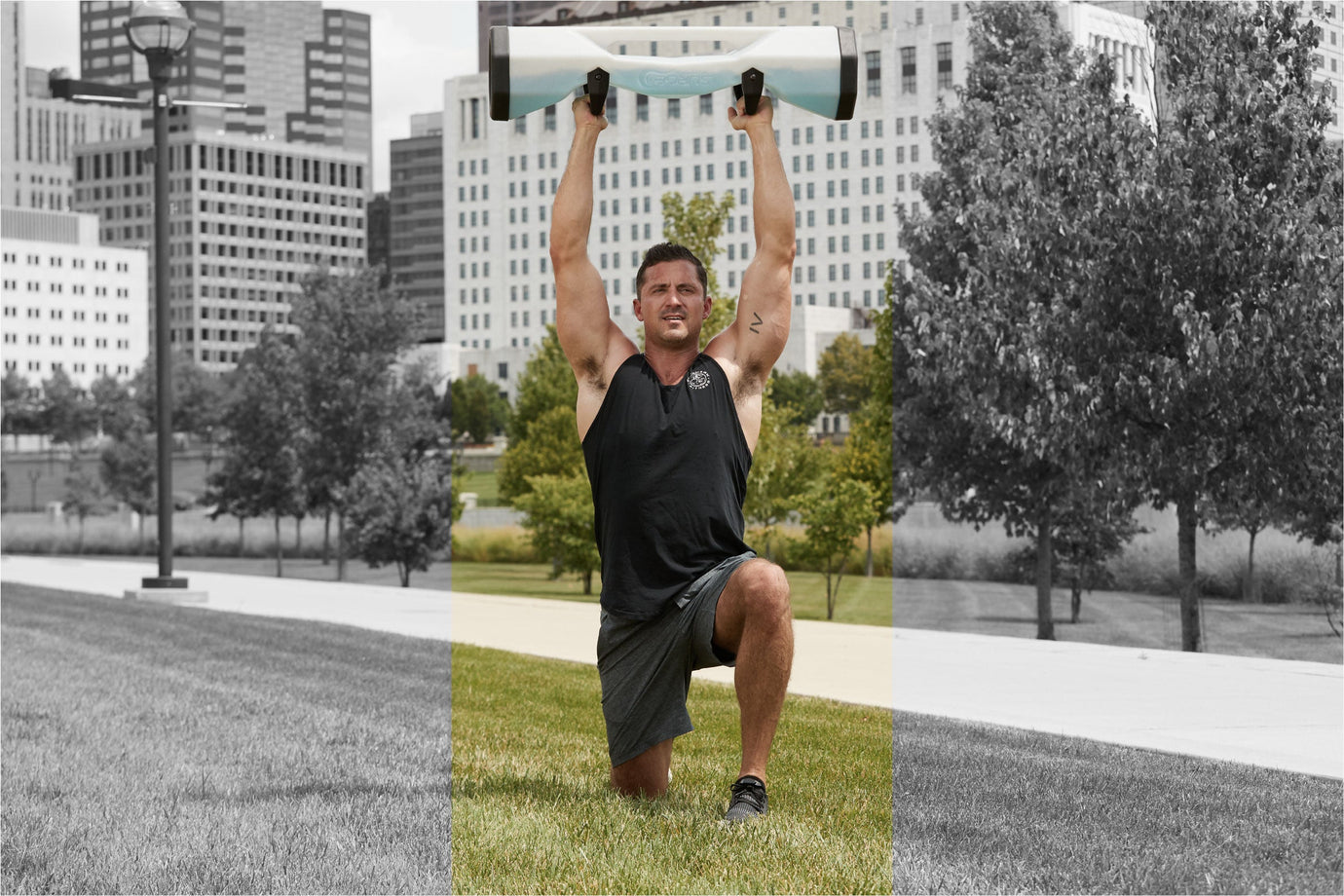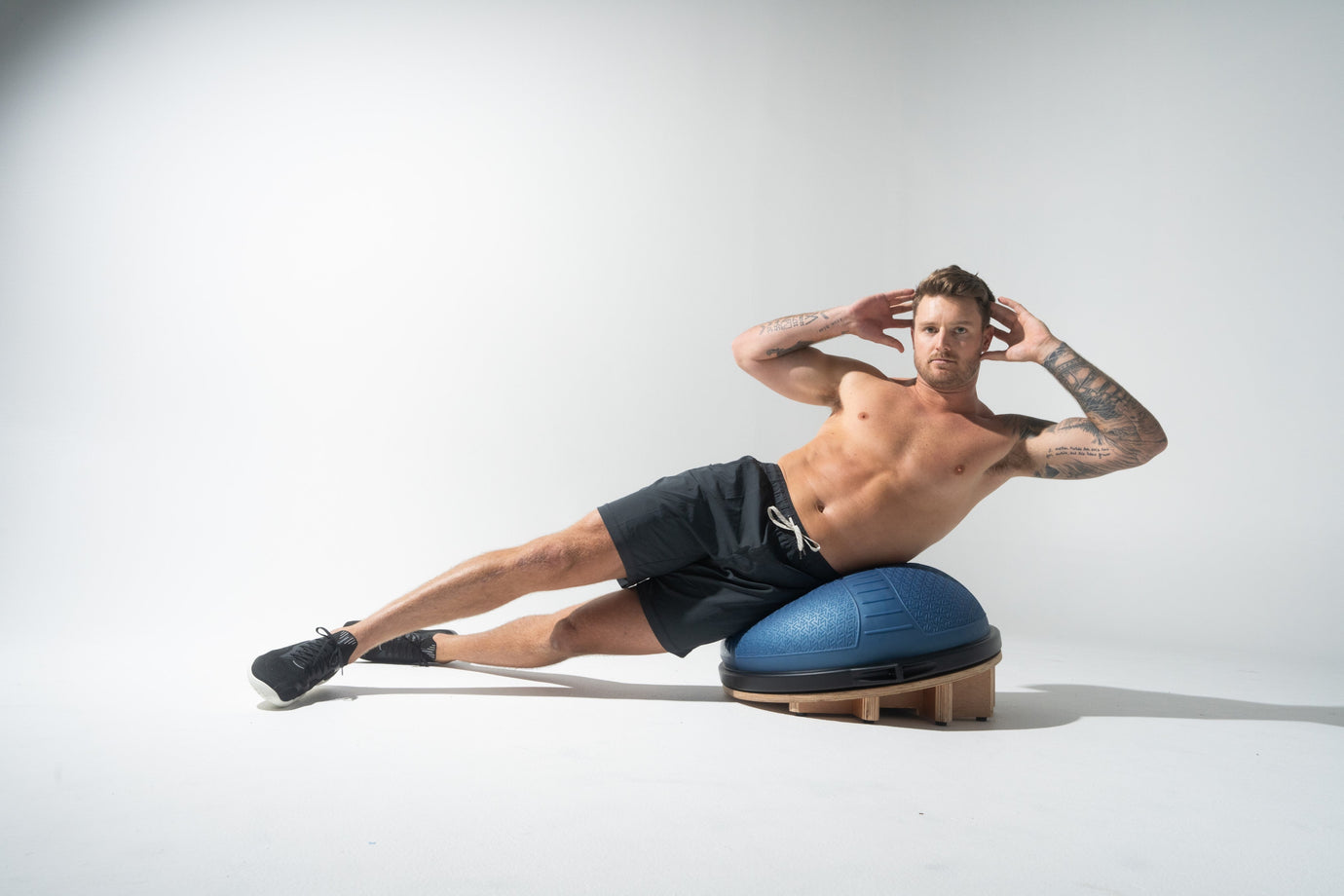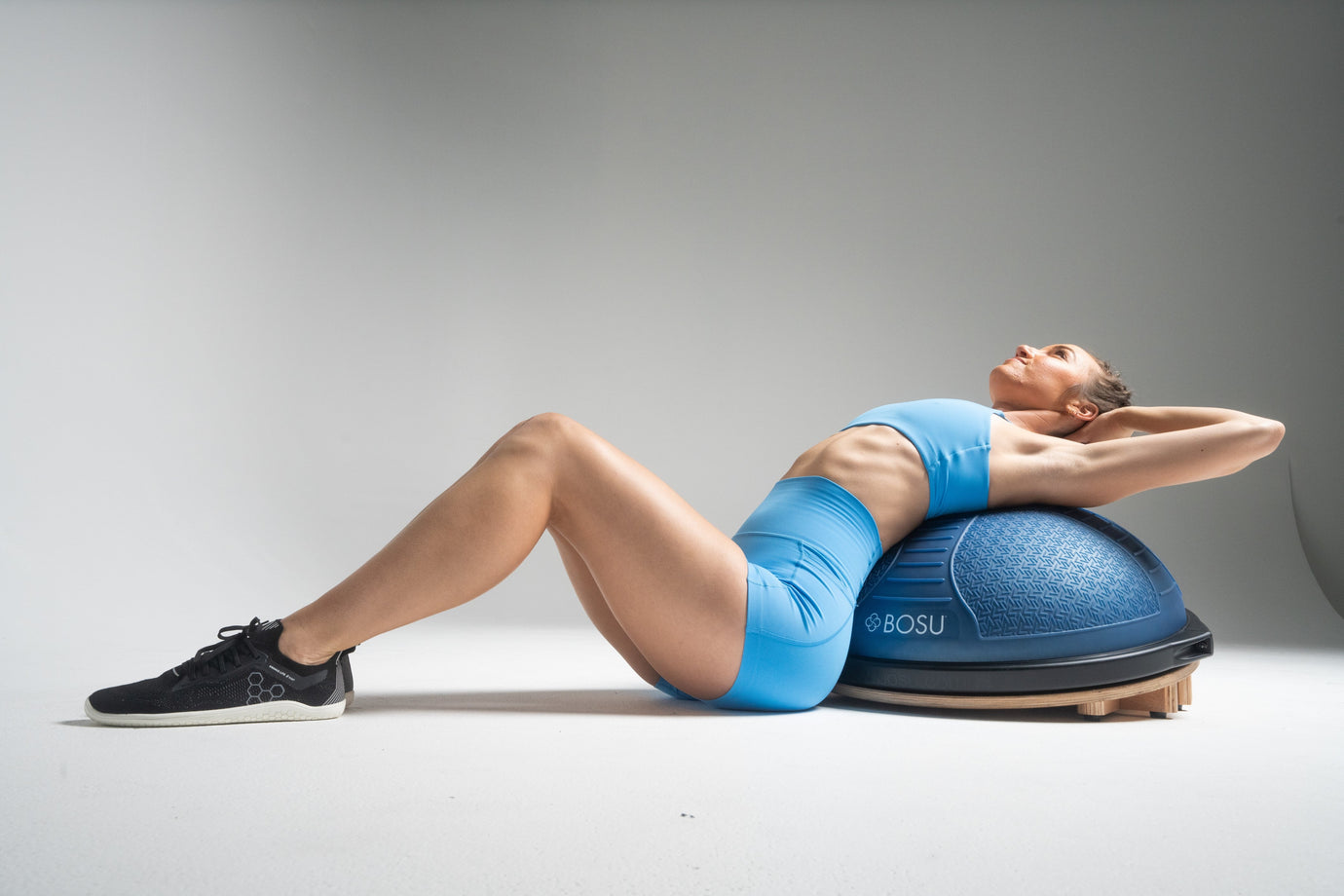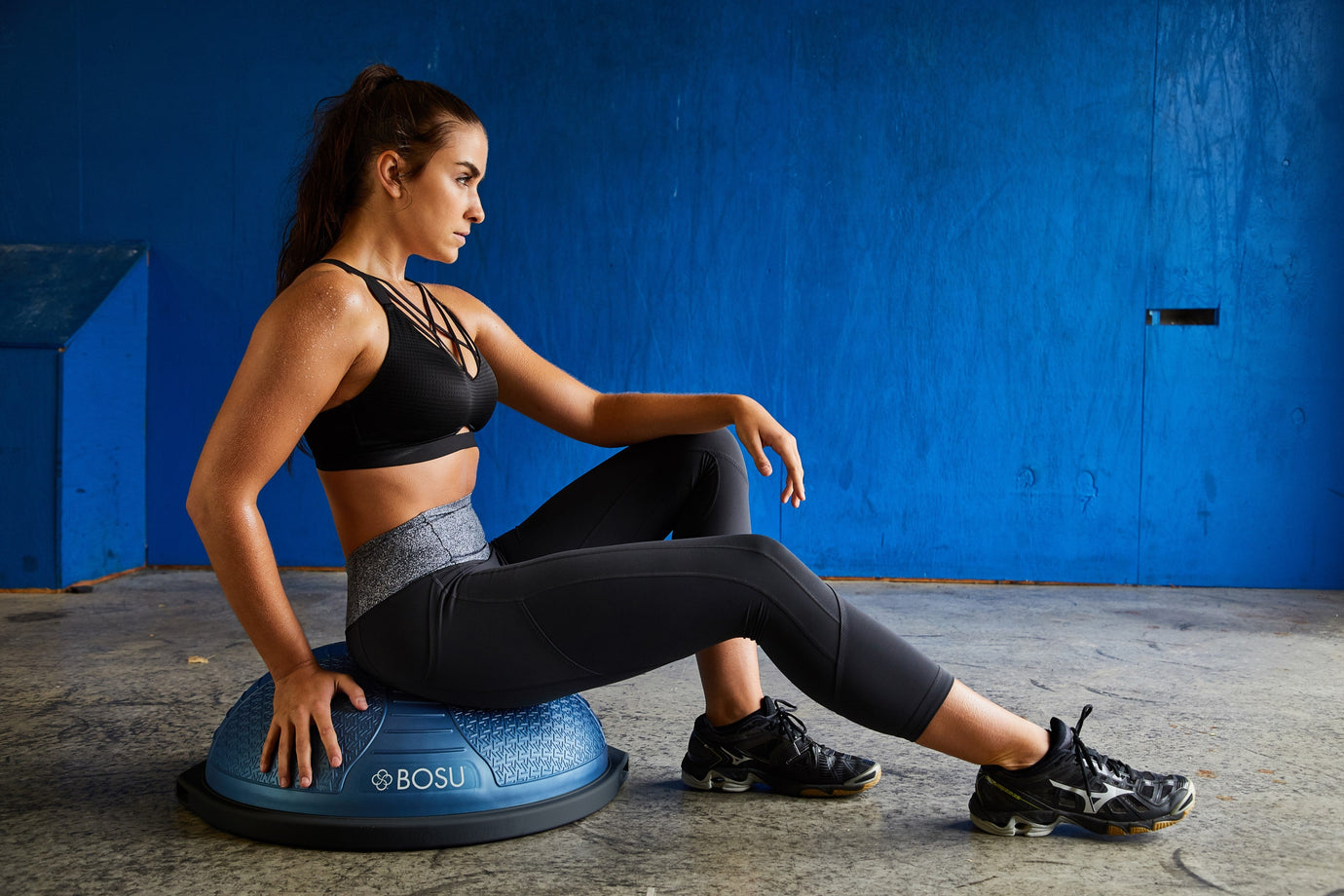Hydro Training for Strength and Stability
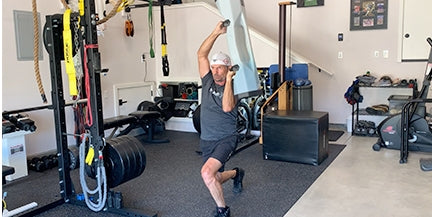
What is Hydro Training?
Straight-up, Hydro Training uses the reactive properties of water in a water-filled product, as an unstable resistance training tool. The inherent properties of water offer reactivity, volatility and unpredictability, which result in positive training results.
Hydro Training is emerging as a hot topic of conversation in the fitness/conditioning world, and represents a new training frontier. The discussion is being driven by water-filled products such as the SURGE® Storm 40 and 60, and the SURGE® Hydro Ball.
Whole body integrated training blends itself well into this category, based on the necessity to adjust to and control the unpredictable movement of water. Bottom line, better “body control” is developed. Your ability to optimize technique, avoid injury, improve performance and lift heavier loads can all increase. And of course, muscle strength, endurance, power, mobility and improved metabolic capability are all possible outcomes depending on how you program the training loads and movement complexes.
Key Point: Understand that the concept of Hydro Training uses the unstable quality of water to enhance performance and overall conditioning because of the constant, variable challenge presented while using a water-filled product.
How Does Hydro Training Work?
To understand how to use this approach in your training, you have to know why Hydro Training is effective. The big difference between static load (e.g., dumbbells, kettlebells, and barbells) and dynamic load (e.g., SURGE® Storm and Hydro Ball) is the reactive stabilization requirements that occur when using the volatile and unpredictable nature of water.
Don’t get me wrong here. Research clearly supports stabilization improvements when “lifting heavy things.” However, water as a resistance tool supplies a continually shifting, never-the-same stimulus the body must react and adapt to on a continual basis. In essence, you turn stabilization on and off as needed, and that is what is required to perform well and avoid injury in both sport and life. Again, you shouldn’t throw out your free-weights and barbells, but simply accessorize your training with this new and different type of training of which your body and brain -- you have to think, too -- don’t get enough!
When using water, force production and stabilization requirements are high, even though the relative water load, in an absolute sense, might be less. An unstable, constantly changing load can increase maximal muscle recruitment for a given load, and improve motor control and stability.
It is critical that you understand fixed stable-load force production vs. unstable-load force production to maximize this approach. By introducing a new overload variable that your body must continually adapt and respond to -- reactive instability training using water -- it becomes apparent there is a difference between static and dynamic loading. That means that a SINGLE type of training does not cover all of your training bases.
Here’s an example of why and how you might introduce this style of training into your programming. Accessory exercises, when utilizing dynamic and reactive water-load, can help increase static load capability! Simply put, your power and strength capacity can increase when you integrate dynamic load accessory training with traditional static-load training (Behm & Colado 2012).
Accessory training and unstable, dynamic resistance training can result in a win-win whether you simply want to get fit, perform better in your sport, avoid injury or lift heavier weights. In other words, if you can improve balance and stability, then strength and power can increase.
Key Point: The amount of water within the device both adds weight and inertial movement. However, as the product fills, there is less room for water movement, and a balance between load and desired water movement and instability is required. Too much water load neutralizes the volatility and reactive properties of water, which in turn robs you of the important muscle activation and stabilization benefits that accompany Hydro Training. Don’t turn your SURGE® Storm or Hydro Ball into a fixed weight by filling it completely it. You want the water to move!
Why is Hydro Training Beneficial?
Following is more key science “stuff” condensed to a paragraph! Activity that creates rapid load changes and puts demands on the muscle, induces neuromuscular adaptations, which allow for more rapid compensatory adjustment and therefore more stability control. Stability is not a function of large magnitude changes in force but rather many small adjustments to maintain control. How do you create this type of adaptation? Think…Hydro Training!
Hydro Training is focused, efficient, effective and DIFFERENT. Using the right kind of complementary training can help enhance training results, avoid plateaus, optimize recovery, minimize overuse injuries and rev up gains. And, it’s a fun and engaging type of training.
Why Specifically Use the SURGE® Storm or SURGE® Hydro Ball?
Many of us have used homemade slosh pipes or tubes, and you know from experience that when the water shifts in a pipe, it is an all-or-none cascade of water that is often too much to safely control. The chamber design of the SURGE® Storm modulates the flow of water to a more controllable and progressive reactivity experience that translates well to sport or activities of daily life. Also, many other design features, such as end caps and several different grips, greatly enhance utility. Bottom line, the SURGE® Storm is not just a pretty slosh pipe!
The SURGE® Hydro Ball is user-friendly, especially on your wrists if you’re performing rack and press exercises with the ball, and if it’s dropped it doesn’t damage the product or floor -- not to mention your feet!
Here are some SURGE® exercises to help you experience Hydro Training.
SURGE® Swing Flip Rack Press
Stand, holding the SURGE® Hydro Ball in one hand in a rack grip. Hinge from the hips and swing the ball between the legs, flip and catch the opposite handle, swing again, then catch in a rack grip. Press the ball overhead and lower back to the shoulder. Change hands by flipping the ball laterally and catching the opposite handle in a rack grip. Stabilize the core and shoulder girdle to control the water motion. Alternate sides with each repetition.
SURGE® Rotary Hip Block Halo
Stand, holding the SURGE® Hydro Ball in a 2-hand 2-handle grip in front. Rotate to one side with a hip block, driving the ball up to the same side. Rotate back to the front and circle the ball around the head in a “halo” motion. The water should oscillate continuously throughout the movements. Alternate sides with each repetition.
SURGE® Split Lunge Press & Dump
Stand, holding the SURGE® Storm in a neutral handle grip in front. Jump to a split lunge and simultaneously press it overhead. Hold the split lunge and tilt the SURGE® Storm from horizontal to vertical across the front leg. Stabilize as the water dumps. Press it back overhead, lower to chest level and step or jump back to starting position. Alternate sides on the split lunge with each repetition.
SURGE® Thread the Needle Hammer
Stand, holding the SURGE® Storm by the long handle in a vertical position. Hinge and swing it between the legs, then over and behind the head in a “hammer” motion. Vary this by alternating the over-the-head hammer movement with over-the-shoulder hammer movements, such as: 2x center, 2x over R shoulder, 2x center, 2x over L shoulder. Stabilize throughout the exercise to control the oscillating movement of the water.
Hydro Training Summary:
Unstable SURGE® resistance exercises require relatively greater trunk muscle activation, which translates to greater stabilizing function for anterior, posterior and lateral core muscles. Instability resistance training exercises can also provide training adaptations for coordination and other motor control issues, including whole-body joint stabilization, which has performance implications for any level athlete.
Ongoing research will continue to define what Hydro Training can, and cannot, accomplish. But, we know it is a great accessory and offloading training approach for highly conditioned athletes and fitness advocates. The training benefit can be scaled to any fitness goal or fitness level, so top coaches, world-class athletes, personal trainers, group fitness instructors, and specialty coaches, as well as therapists in the active aging and rehabilitation fields, are all taking advantage of what Hydro Training has to offer. If you’re in the trenches in any of these areas of conditioning, dig deeper and understand how it becomes part of a complete approach to training.
Douglas Brooks, MS, Exercise Physiologist, is the Director of Programming for Hedstrom Fitness, BOSU® and SURGE®. The former Kona Ironman® triathlete directed Athlete Conditioning for Sugar Bowl Ski Academy for 8 years, working with elite junior and professional athletes. Douglas was inducted into the U.S. National Fitness Hall of Fame and has been honored by Can-Fit-Pro as the International Presenter of the Year. Coach Brooks is the author of numerous fitness education books, and most recently, was the recipient of the IDEA Personal Trainer of the Year Award.
Learn, train and engage with other fitness professionals at SURGE® Live Education courses. For information on our cutting edge content, taught by the best in the industry, click HERE.

